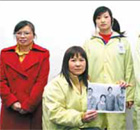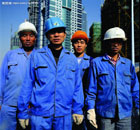Top News
Megalopolis of HK, Macao set in motion
By Guo Jiaxue in Zhuhai and Zhang Jin in Macao (China Daily)
Updated: 2009-12-21 07:15
 |
Large Medium Small |
At yesterday's groundbreaking for the University of Macau's new campus on Hengqin Island in Zhuhai, Guangdong province, President Hu Jintao put in place the formation of a megalopolis that will combine Hong Kong, Macao and part of Guangdong, experts said.
The new 1.1-sq-km campus adds to the the 0.05-sq-km original area in Macao and will be completed in three years.
It will be under the jurisdiction of Macao for 40 years, according to a June decision made by the Standing Committee of the National People's Congress, the country's top legislature.
The idea of Macao and Zhuhai jointly developing the 106-sq-km Hengqin Island, the largest of 146 islands in Zhuhai, was proposed in 2007. The aim is to make the island an education and entertainment hub jointly run by Zhuhai and Macao.
"The campus is based on a new model of cooperation," said Fernando Chui Sai-on, Macao chief executive, at the groundbreaking yesterday.
The project is a "breakthrough" between the Chinese mainland and Macao.
It is the first major move that directly applies the special administrative region's expertise in management to the mainland, said Zhang Yuge, a researcher with the Shenzhen-based think tank China Development Institute.
The agreement combines Zhuhai's land resources and Macao's strengths in education as well as management, said Zhang, who added that "it's just the beginning of more similar cooperation deals".
Joseph Cheng Yu-shek, professor of political science at the City University of Hong Kong, said Hong Kong and Shenzhen could also follow suit.
The joint development in the Shenzhen River area, which borders Hong Kong, is a prime example that could follow in the footsteps of Hengqin Island, he said.
Both experts believe the Hengqin Island model has a significant meaning in building a megalopolis in the Pan-Pearl River Delta region.
"The integration on economy has been forged for years, and now such integration should extend to other areas such as education and medical services," Cheng said.
Zhang said with more areas open for joint development under the policy of "one country, two systems", the idea of making the Pearl River Delta region a megalopolis is no longer up in the air.
The Hong Kong-Zhuhai-Macao Bridge will accelerate that trend.
The world's longest sea bridge will shorten the travel time within the Pearl River Delta and contribute to the integration of the region, Cheng said.
But Zhang said that integration could be a long way away.
"We have to bear in mind that Hong Kong and Macao are rather developed, while Shenzhen and Zhuhai are still developing," he said.
"The systems are also different."












